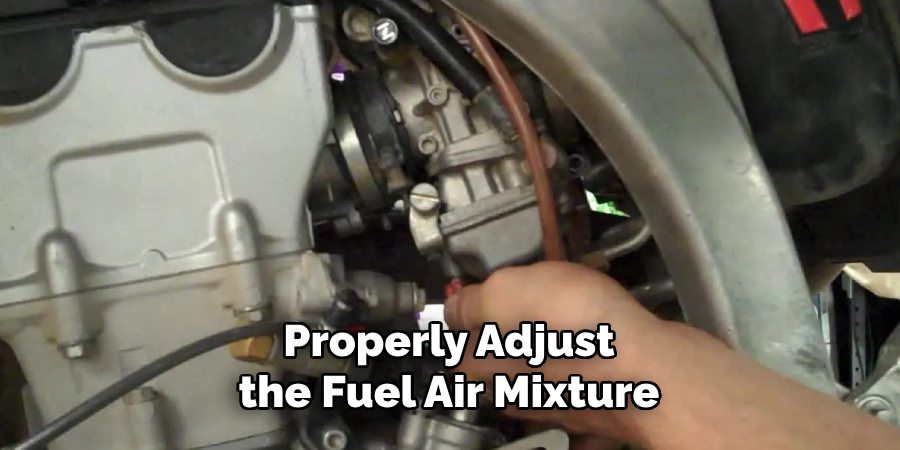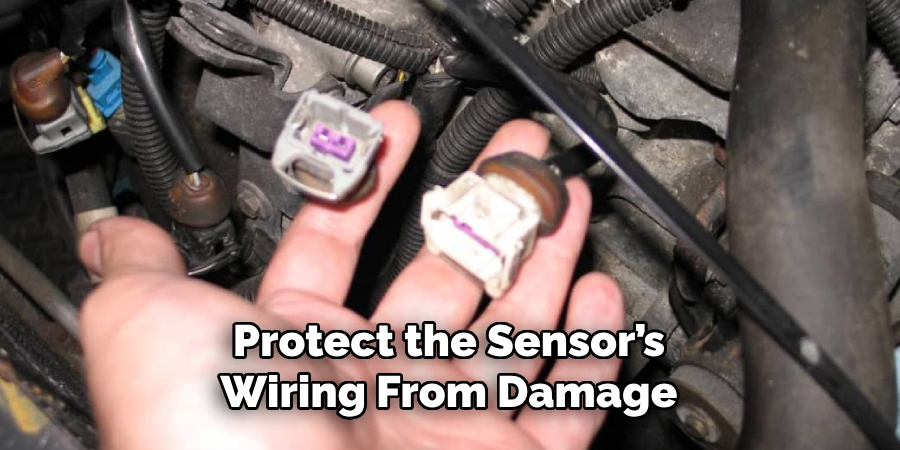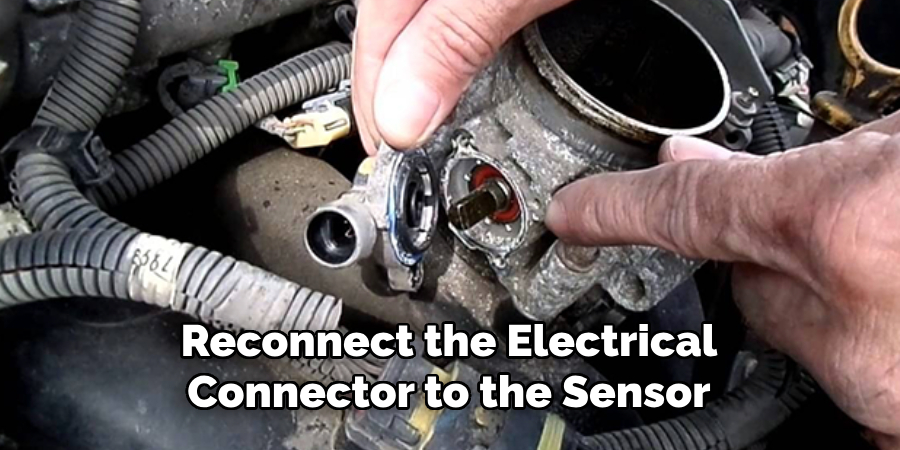The throttle position sensor (TPS) is a crucial component in your vehicle’s engine management system. It monitors the position of the throttle and sends this information to the engine control unit (ECU) to ensure optimal performance. A malfunctioning TPS can lead to problems such as rough idling, poor acceleration, or decreased fuel efficiency. Replacing a faulty TPS is a straightforward process that can help restore your vehicle’s performance. This guide will walk you through how to replace tps sensor safely and efficiently.

What Is a Throttle Position Sensor (TPS)?
The Throttle Position Sensor (TPS) is a crucial component in your vehicle’s fuel management system. Located on the throttle body, the TPS is responsible for tracking the position of the throttle valve. It measures how far the throttle is open, which directly correlates to the amount of air entering the engine. This data is transmitted to the engine control unit (ECU) to adjust fuel injection and ignition timing accordingly, ensuring efficient engine operation. A properly functioning TPS is vital for maintaining smooth acceleration, reliable idling, and optimal fuel economy. Without it, the engine cannot accurately respond to driver input, leading to performance issues.
Signs You Need to Replace the TPS Sensor
A failing TPS sensor can lead to a variety of noticeable problems in your vehicle’s performance. One common sign is irregular acceleration, where the vehicle may hesitate, surge unexpectedly, or fail to respond to throttle input altogether. You might also experience issues with idling, such as a rough or unstable idle. Additionally, poor fuel economy can occur because the engine control unit is unable to properly adjust the fuel-air mixture. A check engine light may also illuminate, indicating a potential fault with the sensor. If you notice these symptoms, it’s crucial to have the TPS sensor inspected and, if necessary, replaced to restore your vehicle’s optimal performance.

10 Methods How to Replace TPS Sensor
1. Understand the Role and Symptoms of a Faulty TPS Sensor
Before diving into the process, it’s crucial to understand what a throttle position sensor does. This component informs the engine control module (ECM) about the position of the throttle valve. The ECM uses this data to adjust fuel and air mixtures for optimal engine performance. A malfunctioning TPS sensor can cause erratic idling, hesitation during acceleration, stalling, or poor fuel efficiency. Common symptoms include the check engine light turning on, rough idle, or unresponsive acceleration, signaling it’s time to inspect and possibly replace the sensor.
2. Gather Tools and Materials
Replacing the TPS requires specific tools for safe and effective removal. Ensure you have the following on hand before starting:
- Wrench set or socket set
- Torque wrench (if necessary)
- Flathead screwdriver
- New throttle position sensor
- Multimeter (for testing the old sensor)
- A clean rag or cloth
- Jack and jack stands (if your vehicle requires lifting)
- Safety gloves and eye protection
Having these tools ready will make the job more efficient and help avoid interruptions during the replacement process.
3. Locate the Throttle Position Sensor
The TPS is typically located on the throttle body, which controls the amount of air entering the engine. Depending on the make and model of your vehicle, the TPS could be attached directly to the throttle body or on the side of it. Use the vehicle’s manual or a repair guide to pinpoint the exact location. Once you’ve found it, visually inspect it for any signs of wear, such as cracks or corrosion, which can make removal more difficult.
4. Disconnect the Battery to Avoid Electrical Hazards
Before starting any electrical work on your car, always disconnect the negative terminal of the battery. This will prevent electrical shock and protect the sensor’s wiring from damage. If you don’t disconnect the battery, there’s a risk of short-circuiting or triggering other electrical malfunctions while working on the TPS. Allow the car to sit for a few minutes after disconnecting the battery to discharge any remaining power in the electrical system.

5. Remove the Electrical Connector from the TPS Sensor
To access the throttle position sensor for removal, you’ll first need to disconnect the electrical connector that connects the sensor to the vehicle’s wiring. Using a flathead screwdriver or your hands, gently release the tab or clip that secures the connector. Be cautious not to damage the connector as you detach it. The wiring and clip are typically made of plastic and can break if too much force is applied. Once disconnected, set the connector aside in a safe place.
6. Loosen the TPS Mounting Screws
Using the appropriate size wrench or socket, loosen and remove the screws or bolts securing the TPS to the throttle body. Some sensors may have two or three screws that need to be unscrewed, while others may have a single bolt. Take note of the screws’ locations and how they come out, as reassembly requires the same order. Keep the screws in a safe spot, so they are not lost during the repair process. Be careful not to strip the screws while removing them, as this can cause difficulty when reattaching the new sensor.
7. Remove the Faulty TPS Sensor
After removing the screws or bolts, the TPS sensor should be loose enough to be taken off the throttle body. Gently wiggle the sensor back and forth if it is stuck. Avoid using excessive force, as this may damage the mounting area or throttle body. Once the sensor is free, you can lift it off and inspect it for wear or damage. If you notice corrosion or dirt buildup on the sensor, it could be an indicator of why it malfunctioned in the first place.

8. Compare the New TPS Sensor with the Old One
Before installing the new throttle position sensor, it’s essential to compare it with the old one to ensure they match. Ensure that the part number and design are identical, as using an incorrect sensor could result in improper engine performance. Check that the mounting points align and that the electrical connector fits properly. If the new TPS doesn’t match the old one, consult the vehicle’s manual or reach out to the manufacturer for assistance in selecting the correct replacement part.
9. Install the New TPS Sensor and Secure It Properly
Once you’ve confirmed that the new sensor is a perfect match, install it by aligning it with the throttle body’s mounting points. Carefully slide the new sensor into position and ensure it fits snugly. Once the sensor is in place, secure it with the screws or bolts that you previously removed. Use your torque wrench to tighten the bolts to the manufacturer’s specified torque rating, which can usually be found in the service manual. Tightening them too much can lead to cracking the sensor, while too little torque may cause it to come loose while driving.
10. Reconnect the Electrical Connector and Test the Sensor
After the new TPS sensor is installed and secured, reconnect the electrical connector to the sensor. Make sure the connection is firm and properly seated to avoid electrical malfunctions. Once everything is connected, reconnect the negative terminal of the battery and start the engine. Test the throttle by accelerating gently to ensure smooth performance. Use a scan tool to check for any error codes or issues related to the TPS sensor. If the engine runs smoothly without the check engine light appearing, you’ve successfully replaced the TPS.

Conclusion
Replacing the throttle position sensor is a straightforward repair that can greatly improve your vehicle’s performance. By following these 10 methods, you can complete the process efficiently and correctly, ensuring that your car runs as it should. Always be cautious with electrical components, ensure the correct part replacement, and double-check all connections to prevent issues. If you feel uncertain or the problem persists even after replacement, consulting a professional mechanic is a good option for further diagnosis and repair. Thanks for reading our blog post on how to replace tps sensor! We hope you found it helpful and informative.
About
Safety Fic is a distinguished figure in the world of Diy design, with a decade of expertise creating innovative and sustainable Diy solutions. His professional focus lies in merging traditional craftsmanship with modern manufacturing techniques, fostering designs that are both practical and environmentally conscious. As the author of diy, Safety Fic delves into the art and science of Safety Fic-making, inspiring artisans and industry professionals alike.
Education RMIT University
(Melbourne, Australia) Associate Degree in Design (Safety Fic) Focus on sustainable design, industry-driven projects, and practical craftsmanship. Gained hands-on experience with traditional and digital manufacturing tools, such as CAD and CNC software.
Nottingham Trent University
(United Kingdom) Bachelor’s in diyfastly.com and Product Design (Honors) Specialized in product design with a focus on blending creativity with production techniques. Participated in industry projects, working with companies like John Lewis and Vitsoe to gain real-world insights.
Publications and Impact
In diy, Safety Fic his insights on indoor design processes, materials, and strategies for efficient production. His writing bridges the gap between artisan knowledge and modern industry needs, making it a must-read for both budding designers and seasoned professionals.
